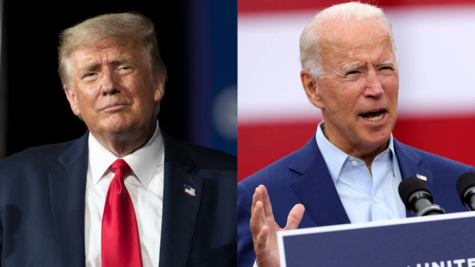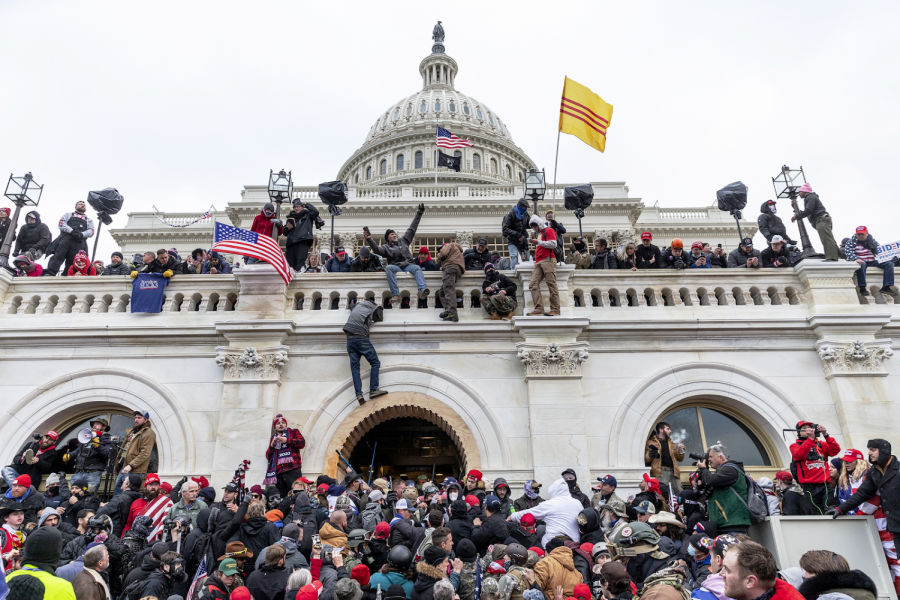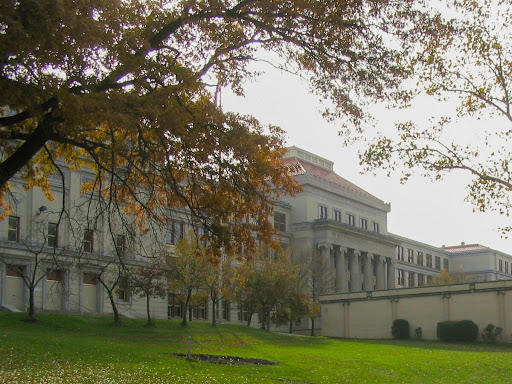The Storming Of the Capital: Why Did This Happen and How do we Stop it From Happening Again?
“This event has left many Americans confused and concerned wondering why this has happened, who’s to blame, and how to prevent it from happening again.”
Almost everyone seems to agree that the events at the U.S. Capitol Building on January 6th was a very momentous moment in American history. This is the first time that any real group of people have raided the Capitol building since the War of 1812 . I have even heard some people go as far as to compare it to 9/11. While this comparison is hyperbolic, as this event lead to significantly less deaths and is unlikely to cause America to invade another country, it is true that this event— similarly to 9/11—has left many Americans confused and concerned wondering why this has happened, who’s to blame, and how to prevent it from happening again.
To answer any of those questions, we first have to look at what actually happened at the Capitol. On January 6th, the Congress had gathered to count and certify the winner of the 2020 presidential election. In reaction, Donald Trump had organized a “Save America” rally, assembled to protest Biden being named the winner of the election. This rally was a last ditch attempt by the Trump administration to protest the election results after several other failed attempts, including trying to overturn votes with various legal cases to him personally calling the Secretary of State in Georgia begging and threatening him to try to recount again in Georgia. Thousands of Trump supporters came to this rally and heard speeches from Trump himself, along with many of his supporters like his former lawyer Rudy Gulliani. After these speeches, the action moved outside the Capitol building and soon enough hundreds of people began to push their way past the police guarding the Capitol and into the building itself which led to members of the Congress needing to flee the Capitol. While the rioters eventually left the Capitol, the effects of this event are still being felt throughout the entire nation.
Looking at a summary of what happened, it is easy for people to place all the blame on Trump (who to be clear should take a lot of the blame for this event happening). But cutting off this analysis at it just being Trump’s fault doesn’t fully answer the question. In order to prevent something like this from happening again we must understand the conditions that led to the growing popularity of Trump and the larger far right in the last decade. In order to develop that deeper understanding of the situation we must look past Trump alone.
To begin this attempt to look past Trump, we must deconstruct the idea that Trump is a wholly unique figure in American politics. Trump’s two major tactics during his political campaign in 2016 were scapegoating minority groups for the issues the country was facing at the time and framing himself as outside of the mainstream American political establishment. These aren’t unique tactics in American politics. For example, during segregation white Southern politicians would scapegoat black people for the poverty many white Southerners were experiencing at the time. This scapegoating served both to continue the exploitation and discrimination of black people while simultaneously distracting poor whites from actually fighting for politicans who worked to improve the economic situation of the South.
Trump framing himself as an outsider also isn’t new; many politicians have done it. Additionally, it isn’t surprising that this framing drew people to him, considering the growing disillusionment with the American political system sparked in many ways by the Great Recession. The Great Recession, aka the 2008 Housing Crisis, was an economic crisis created by the bursting of the housing bubble, which horribly affected many working people in America at its height, leaving millions jobless and homeless. The Obama administration response to this crisis involved giving millions of dollars in bailouts to industries like General Motors deemed too big to fail and a significantly smaller amount of support to working-class people. The consequences of the Great Recession devastated the working-class, massively increased wealth disparities between the classes, increased the expenses of already-pricy industries , and created greater job instability.
When people see a system so thoroughly fail them, it is unsurprising that they become disillusioned with it and seek some sort of alternative. In America, the alternative that many people found was with reactionary right-wing groups like the Tea Party, who in many ways are the predecessors to Trump. While the Tea Party eventually faded away, the issues that drew people to it didn’t. When Trump began his run for president in 2016 he used a lot of the same right-wing populist rhetoric as they did. And despite how nonsensical and often offensive most of Trump’s speaking is, he tapped into something that many working-class people in this country are feeling: frustration at the current system and a want to change it. This growing disillusionment with our current political system didn’t just affect politics on a presidential level but also has spurred the growth of many of the far-right groups that we saw at the storming of the Capitol, like the Proud Boys and QAnon.
When looking at this understanding as to how the far-right has grown over the past decade, it is hard to find Trump’s impeachment or Biden’s inauguration as actual solutions to the problem. While Trump should certainly be held accountable for the role he played in organizing this rally and in growing the far-right, in general his ability to do that is a symptom of the larger issue. Biden becoming president and his administration’s goals to return America back to “normalcy” doesn’t actually solve American’s distrust of their government. In fact it completely rejects the types of solutions that are needed as the normalcy that the Biden administration wishes to return to is the very conditions that breed this growth in the far-right in the first place. So if Biden being elected can’t solve the problem and Trump being impeached doesn’t solve the problem then what does?

(wdtn.com)
Well there are two solutions to the problem: a more immediate solution to the direct threat of the far-right and a more long-term solution to address the root cause of this issue. The more immediate way to fight the far-right is through the development of massive worker’s movements against them. As much as the far-right has grown within the US in recent years, people who oppose the far-right and the racist, anti-semitic, and general horrible ideas they promote greatly outnumber them. This is shown best by the recent Black Lives Matter movement during the Summer which was the biggest protest movement in American history. If the same massive forces that came out to fight against racist police brutality came out to organize against the far-right, the far-right would face an actual obstacle to its growth. We can see the effectiveness of a strategy like this in Boston in 2017. A week after the far-right Unite the Right rally in Charleston that resulted in the brutal murder of Heather Heyer, a Free Speech Rally organized by far-right forces was planned in Boston. This rally was met with a massive counterprotest of 15,000 people — the intensity of these counterprotests not only showed the willingness of people in Boston to stand up against the far-right but it also caused only a dozen or so people to show up to the Free Speech Rally.
The other more long-term solution to this problem requires a massive change in our current society. Changing the direction of our nation isn’t only necessary to address the far-right but also to address all the issues Americans are facing right now whether it be the need for an end to the cycle of economic recessions our nation seems stuck in or the impending threat of climate change. But what would this new society look like? To me the solution to the issues our nation is facing is socialism. We have entered a situation where our current capitalist system is not only failing us by fueling greater inequalities within our society but it is also much more directly leading our society down several irreversible paths whether that be climate change or this rise in the far-right that we are seeing.
Famed socialist revolutionary Rosa Luxemborg described the essential question facing capitalist nations clearly heading towards ruin as “Socialism or barbarism.” The prioritization of profit over the larger wellbeing of our society is creating a dangerous situation and that is why we need the creation of a society that prioritizes the needs and interest of workers. With a society like that we could provide the basic support people need that will keep many of them for moving towards reactionary groups, we could fight against climate change, and we could provide the universal healthcare system that this pandemic has shown we so clearly need. While socialism may seem disconnected to the threat of the far-right it is important to understand to see the far-right as a symptom of a failing capitalist system, something that can truly only be solved by socialism.







